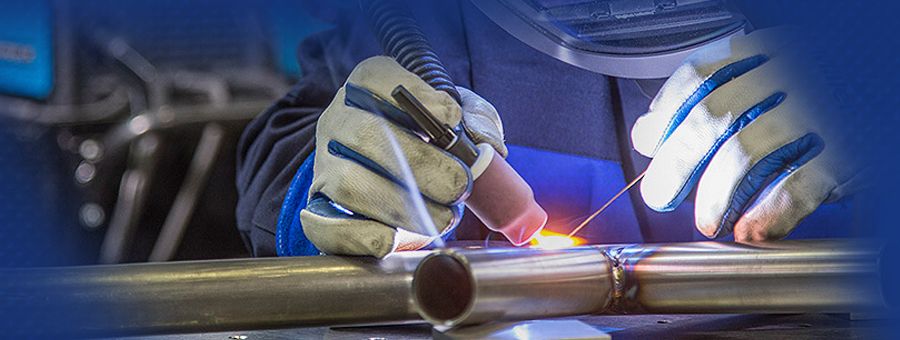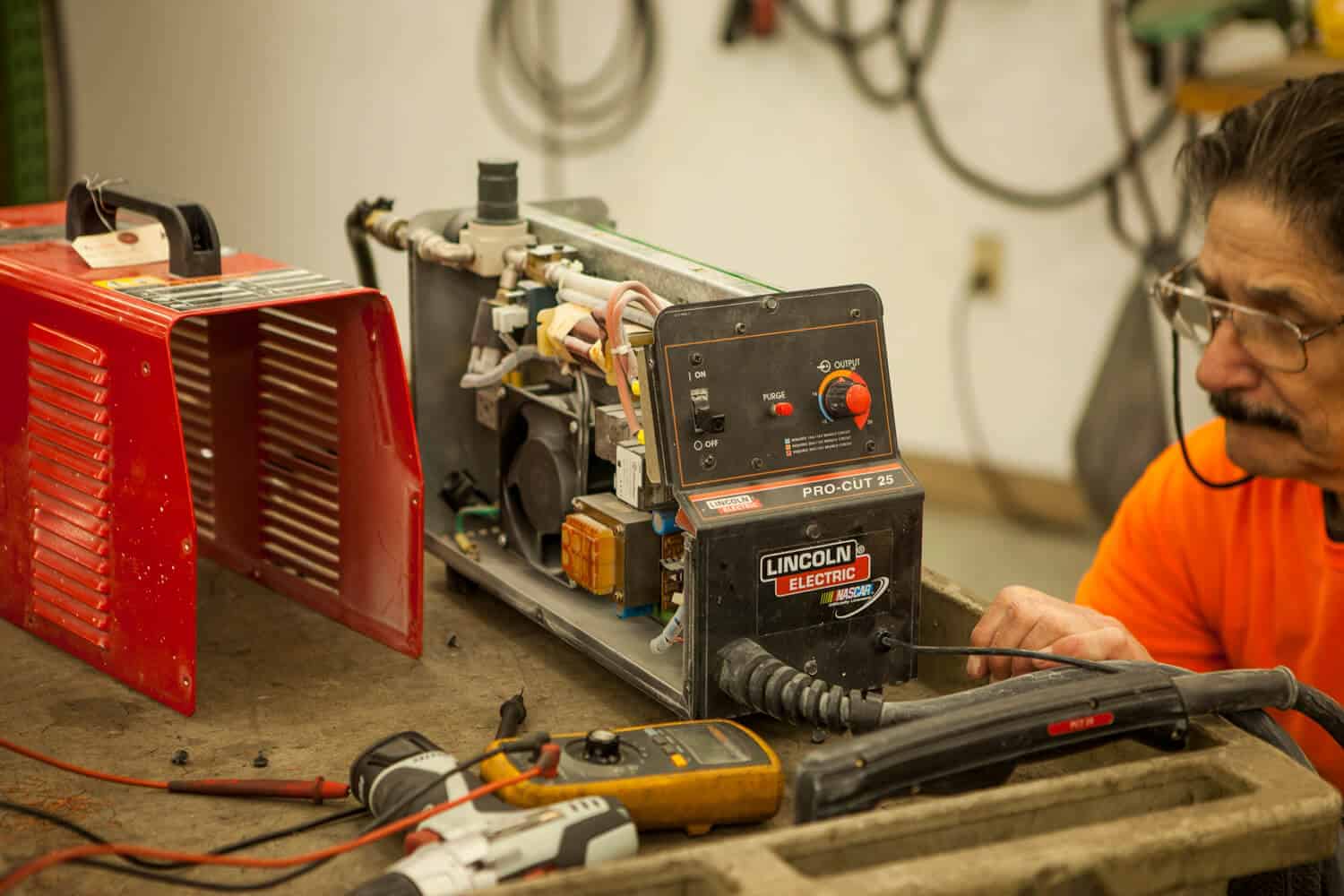Common Welding Repair Issues and Just How to Address Them Properly
Welding fixings often experience a range of concerns that can endanger the stability of the last product. Typical troubles include inadequate penetration, porosity, and imbalance, to name a few. Each problem presents one-of-a-kind difficulties that call for specific approaches for resolution. Recognizing these issues is vital for welders intending to enhance their skills and end results. This discussion will explore these usual welding repair service issues and effective techniques to address them.
Insufficient Infiltration
Inadequate penetration occurs when the weld steel fails to fully fuse with the base product, causing weak joints and potential structural failures. This problem typically comes from insufficient heat input, wrong electrode angle, or incorrect welding speed. Welders might run into insufficient infiltration as a result of a miscalculation of the required criteria for a specific material density or type. Furthermore, contamination on the base product's surface area can hinder effective bonding, worsening the trouble. To resolve inadequate infiltration, welders need to ensure ideal setups on their devices and keep a tidy work surface. Routine inspection of welds is suggested to identify any shortages early, enabling timely modifications and the avoidance of endangered architectural integrity in welded settings up.
Porosity
Porosity is a typical flaw in welded joints that shows up as little gas bubbles trapped within the weld metal. This problem can jeopardize the stability of the weld, resulting in lowered strength and potential failure under anxiety. Fabrication. Porosity commonly arises from contamination, wetness, or incorrect welding techniques, which permit gases to leave right into the molten weld swimming pool. To resolve porosity, welders must ensure appropriate surface area preparation, keep a tidy workplace, and utilize appropriate welding specifications. Additionally, choosing the right filler material and protecting gas can alleviate gas entrapment. Regular assessment and screening of welds can aid recognize porosity early, guaranteeing prompt restorative actions are taken, thereby protecting the high quality and dependability of the welded structure
Misalignment
Imbalance in welding can arise from different factors, including incorrect configuration and thermal development. Understanding the source is crucial for effective resolution. A number of improvement methods are offered to realign elements and assure structural stability.
Root causes of Misalignment
Welding imbalance typically stems from a variety of underlying problems that can endanger structural stability. One key reason is incorrect fit-up of parts prior to welding, which can lead to spaces and irregular surfaces. Variations in thermal expansion during the welding procedure can additionally result in distortion, especially if the materials being joined have different coefficients of expansion. Additionally, inadequate clamping and fixturing might fall short to hold components safely in location, resulting in motion throughout welding. Inadequately kept tools, consisting of welding equipments and tools, might introduce disparities in the weld bead, more contributing to misalignment. Lastly, driver error, coming from inadequate training or experience, can likewise play a significant function in producing misaligned welds.
Improvement Techniques Readily Available
Resolving misalignment efficiently calls for a combination of rehabilitative strategies tailored to the specific problems handy. One usual method is the usage of fixtures or jigs to hold components in the appropriate placement throughout welding, guaranteeing consistent placement. Additionally, preheating the materials can assist reduce distortion and boost fit-up. For substantial misalignment, mechanical adjustment methods, such as using hydraulic jacks or clamps, can be used to correct the setting prior to welding. Post-weld warm treatment might likewise be essential to soothe tensions brought on by misalignment. Ultimately, cautious examination and change throughout the setup phase can protect against imbalance problems from becoming considerable issues, advertising a smoother welding procedure and boosting general structural stability.
Distortion
Distortion is an usual obstacle in welding that can occur from different factors, consisting of irregular cooling and heating. Recognizing the reasons for distortion is necessary for carrying out efficient avoidance methods. Resolving this issue not only boosts structural stability yet also enhances the general top quality of the weld.
Root causes of Distortion
When subjected to the intense warmth of welding, products often go through changes that can bring about distortion. This phenomenon mainly occurs from thermal expansion and tightening throughout the welding procedure. As the weld area warms up, the product increases; upon air conditioning, it acquires, which can produce interior anxieties. Additionally, uneven home heating across a workpiece can intensify these stresses, causing bending or bending. The type of material also plays a considerable role; steels with varying thermal conductivity and coefficients of growth may react in different ways, causing uncertain distortions. Furthermore, bad joint layout and inadequate fixturing can contribute to misalignment throughout welding, raising the likelihood of distortion. Understanding these reasons is necessary for reliable welding repair work and prevention strategies.
Prevention Techniques
Effective prevention strategies for distortion during welding emphasis on managing warm input and ensuring proper joint design. Keeping a constant warmth input assists to decrease thermal development and contraction, which can lead to distortion. Making use of strategies such as pre-heating the workpiece can additionally reduce the temperature level gradient, promoting consistent home heating. Furthermore, selecting proper joint layouts, such as T-joints or lap joints, can enhance stability and reduce stress concentrations. Applying proper fixturing to safeguard the workpieces in position further help in preserving positioning during the welding process. Finally, staggered welding sequences can disperse heat more equally, protecting against local distortion. By applying these strategies, welders can substantially lower the possibility of distortion and improve the total top quality of resource their welds.
Breaking
Breaking is a common issue come across in welding repair services, typically arising from various variables such as inappropriate air conditioning rates, material choice, or poor joint prep work. The event of fractures can substantially pop over to these guys endanger the integrity of the weld, causing potential failings during procedure. To address this issue, welders should first assess the source, guaranteeing that materials work and appropriately picked for the particular application. Furthermore, managing the cooling rate during the welding process is important; rapid air conditioning can cause stress and cause splitting. Correct joint style and preparation additionally add to decreasing the threat. Executing these strategies can enhance weld high quality and resilience, eventually reducing the probability of cracking in finished weldments.

Insufficient Fusion
A considerable problem in welding repairs is incomplete combination, which takes place when the weld steel does not effectively bond with the base material or previous weld passes - Belgrade. This problem can cause weak points in the joint, possibly endangering the stability of the welded structure. Variables adding to insufficient combination consist of insufficient heat input, inappropriate welding technique, and contamination of the surface areas being joined. To address this issue properly, welders must ensure correct pre-weld cleaning and surface area prep work, in addition to change their welding criteria to achieve appropriate penetration and combination. Routine inspection throughout the welding process can additionally aid identify incomplete combination early, permitting for prompt restorative procedures to improve Recommended Site the overall quality of the weld
Overheating
While welding repair work can improve structural stability, overheating offers a substantial obstacle that can bring about product degradation. Extreme warm during welding can alter the mechanical residential or commercial properties of metals, causing lowered stamina, boosted brittleness, and bending. This phenomenon is specifically important in high-stress applications where structural reliability is paramount. Determining getting too hot can entail visual examinations for discoloration or distortion, along with keeping track of temperature during the welding process. To minimize the dangers related to getting too hot, welders ought to utilize appropriate methods, such as regulating warm input, adjusting travel rate, and making use of appropriate filler materials. Furthermore, carrying out pre- and post-weld heat therapies can aid restore product residential or commercial properties and improve the general high quality of the repair service, making sure long-lasting performance and security.
Frequently Asked Questions
What Are the Usual Indications of a Welding Problem?

Just How Can I Evaluate My Welds for Quality?
To examine welds for high quality, one can use aesthetic evaluations, ultrasonic testing, and radiographic techniques. Each method ensures structural stability, determines problems, and confirms adherence to specified criteria, inevitably boosting the reliability of the bonded joints.
What Safety and security Precautions Should I Take While Welding?
When welding, one should focus on safety by using appropriate personal safety tools, making certain appropriate ventilation, protecting combustible materials away, maintaining a tidy workspace, and being mindful of environments to protect against accidents and injuries.
Can I Repair a Weld Without Redesigning the Entire Joint?
Repairing a weld without remodeling the entire joint is feasible, relying on the damage (Welding). Methods such as grinding, including filler material, or using a welding procedure can properly address certain problems while maintaining the bordering framework
What Devices Are Vital for Reliable Welding Services?
Crucial devices for reliable welding fixings include a welding equipment, wire brush, grinder, protective equipment, clamps, and filler products. Each tool plays a vital role in making certain quality and safety and security during the repair service procedure. Porosity typically develops from contamination, moisture, or inappropriate welding techniques, which permit gases to leave into the molten weld pool. Inadequately maintained equipment, consisting of welding machines and tools, may introduce disparities in the weld grain, more adding to imbalance. When subjected to the intense warmth of welding, materials usually undergo changes that can lead to distortion. Cracking is a typical issue encountered in welding fixings, usually resulting from different elements such as improper air conditioning prices, product choice, or inadequate joint preparation. A substantial concern in welding repair work is incomplete blend, which occurs when the weld steel does not adequately bond with the base product or previous weld passes.